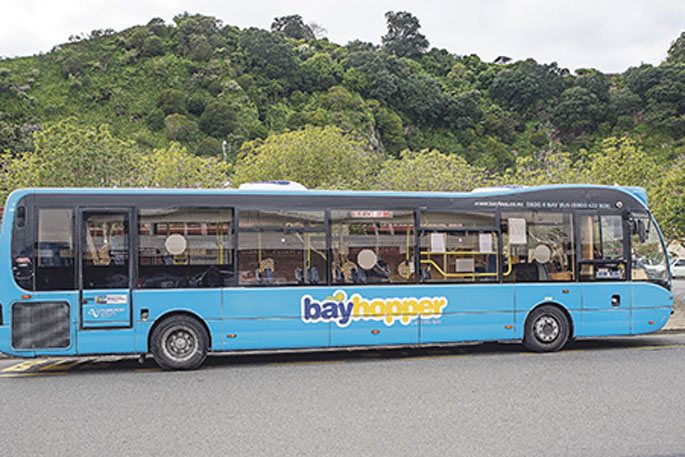A reversal of the Bay Hopper bus route is possible as the regional council attempts to entice more passengers to use the service.
The Bay of Plenty Regional Council is reviewing the Eastern Bay bus network over the next 12 to 18 months with one of the earliest changes likely to affect the underused Whakatāne-Ōhope route.
A new route was planned for the 122 service, which takes 45 minutes to get from Ōhope to Whakatane. This could be implemented within the next three to four months.
The existing service from Ōhope takes a route directly to Whakatāne Hospital, then makes a circuit of Awatapu before heading toward the town centre.
In a report to yesterday's public transport meeting, transport and urban planning manager, James Llewellyn, proposes reversing the route through town so it heads directly to The Strand, along Commerce Street, before heading to the hospital and Awatapu.
The change in route could take as much as 15-to-20 minutes off the journey between Ohope and the town centre.
It is also proposed to extend the route over the Whakatāne Bridge to The Hub, where new bus stops have recently been provided. The route the bus takes through Ōhope will remain unchanged.
According to the report, there are eight inbound journeys and seven outbound journeys a day, making it the only bus route in the Eastern Bay that operates daily. From July 2020 to June 2021, 20,000 passengers used the service.
The proposed new cross-town 'route one” terminating at The Hub requires five new bus stops, three along Commerce Street, one in King Street, Kopeopeo, and another in Hinemoa Street.
The report said that in some instances it would be necessary to remove a small number of car parks to accommodate these stops.
The route would no longer travel along Goulstone Road, James Street, Kakaharoa Drive or Quay Street, making the six bus stops along these streets defunct.
Regional councillor Jane Nees questioned the rationale behind discontinuing the part of the service that travelled along Kakaharoa Drive to the visitor centre at the eastern end of the town centre.
Mr Llewellyn said it was to keep the route shorter.
'If we are looking to deliver a route within existing resources ... you need to look at the trade-offs between the need to get as much coverage that you can within the urban area with the need to ensure that you have a service that you can operate with one vehicle.
'One of the cons of the proposal is that it would no longer serve the Quay Street stop in the CBD. Analysis suggests that it isn't that well used.”
Mr Llewellyn said the council would be doing some consultation about the changes to the route but was not able to confirm what the exact scope of that consultation would be.
'It does seem like a very sensible approach to be engaging with key stakeholders such as the visitor centre.”
The committee, of which Mayor Judy Turner is a member, will be working with Whakatāne District Council to 'identify a delivery mechanism for the necessary bus stop infrastructure”.
Mrs Turner said Whakatāne council staff had gone back to the council with a few tweaks to the service. 'The real challenge, not just in the Eastern Bay but the whole of the Bay of Plenty is how we can improve patronage of the service.”
She said there had been talk of offering the service for a very reduced fare for a limited period and she would like to get behind a publicity campaign asking people to 'give it a go”.
She has also been talking to other Eastern Bay mayors about putting forward a submission to regional council together. She felt the district could benefit from looking at what other rural communities were doing very successfully around an Uber-style service with smaller vehicles.
There are several groups in Whakatāne that provide transport to people from isolated communities, helping them to get to medical appointments, and she is keen to meet with them, too.
'I'm saying why don't we see what we could come up with and take it to the regional committee so it becomes part of the strategy for the Bay of Plenty, but more appropriate to the Eastern Bay.
'Because, in terms of our climate change aspirations, reducing vehicle numbers on the road is a huge contributor to good outcomes.”
-Local Democracy Reporting is Public Interest Journalism funded through NZ On Air




0 comments
Leave a Comment
You must be logged in to make a comment.